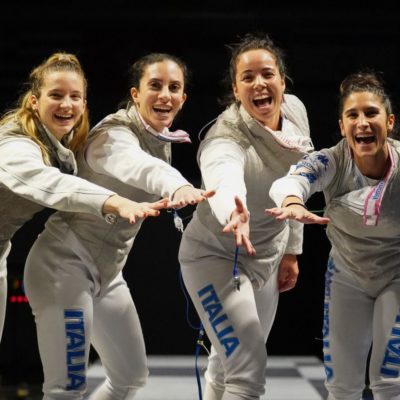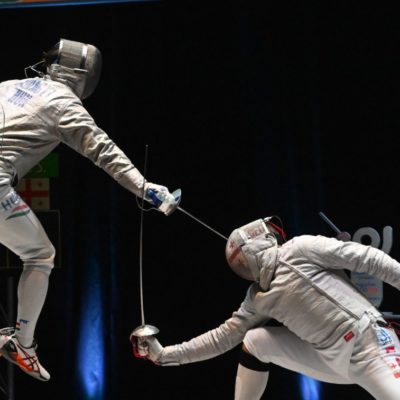Fencing bouts take place on a long, narrow strip about fourteen meters long and two meters wide. Fencers take position at the “on guard” lines, two meters equidistant from the precise center of the strip.
The “director” (the main referee) calls, “Ready? Fence!” and the fencers begin their combat. As the fencers try to score points, they move back and forth on the strip. If a fencer runs off the side of the strip, the director stops the action and repositions the fencers. If a fencer is chased off the very end of the strip, a point is awarded against him.
{mosimage}
When a fencer scores a “touch,” the director calls, “Halt!” and then indicates who wins the point. Since both fencers are simultaneously trying to defend and hit, directors are required at tournaments to fairly judge the actions. Even during practice, directors are preferred, though not strictly necessary.
Because of its speed, fencing uses modern devices to assist the director in awarding points.
Fencers “hook up” to the scoring apparatus. A wire connects to the weapon, runs up the fencer’s sleeve and down to the bottom of the fencer’s jacket. There, it connects to a longer, retractable cord that plays out or takes in slack as the fencer moves back and forth. This cord is connected to the scoring box which is, basically, a computer with several timers and scoring lights.
When a fencer hits his opponent, the scoring box emits a shrill beep and illuminates the light on the side of the fencer who was hit. The scoring box also has secondary lights to indicate when fencers are hit off-target. The on-target lights are colored (either red or green), and the off-target lights are plain white.
The director uses the lights on the scoring box to confirm that a hit (valid or invalid) indeed took place. To award points, however, the director applies the governing rules of fencing. Hence, the lights on the scoring box are a good, but not always accurate, reflection of who got the point. For example, if both fencers hit, then lights on both sides will be illuminated… and the director must decide who gets the touch.





